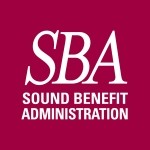Competition for employees has been fierce these past few years, as companies struggle with labor shortages and shifting employee priorities. Enter the hot new employee benefit, Lifestyle Spending Accounts (LSAs). Canadian employers have embraced these programs for some time and it’s one of the most sought-after benefits provided in Canada. Here in the U.S., we’ve all seen the pandemic cause significant changes in the workplace. Employers need to think outside of the “benefits box” and get creative in their package offerings. An LSA gives the employer maximum flexibility to fund benefits tailored to what their specific employee demographic wants. Here’s how it works:
With an LSA, the employer needs only to decide how much they want to offer employees then the list of things an LSA might reimburse is limited only by the imagination. Here’s just a sample of reimbursable expenses:
-
- Physical activities: fitness equipment, athletic wear, fitness apps, fitness classes, fitness trackers, gym memberships, passes for golf, swimming, skiing. Personal trainers, sports equipment, kayak/paddleboard.
- Household expenses: cell phone bills, child and pet care, estate planning, financial advisory services, financial seminars, groceries, home purchase or remodeling costs, rent or mortgage, utilities.
- Non-traditional health expenses: cooking classes, cookbooks, vitamins/minerals/supplements, leadership and spiritual retreats, life coaching, marital counseling, meditation classes, nutrition counseling, parenting classes, yoga classes, pet related expenses.
- Education/work-related expenses: adult education, ergonomic chair/cushions, high-speed internet, home office supplies (printer, paper, etc), standing desks, student loan reimbursement, tech accessories (monitors, keyboards, headset), transit expenses, wrist pads and supports.
Since you can reimburse ANYTHING, the bigger question is what you don’t want it to reimburse. Some employers might exclude liquor and cannabis, for example.
As far as the functional/administrative details of LSAs, they:
-
- Are not tax-advantaged accounts – employees pay taxes on the reimbursed amounts
- Are treated similar to a bonus from an employee’s taxable perspective
- Are treated as a business expense to the employer
- Do not require non-discrimination testing
- Can reimburse different amounts for different classes of employees
- Do not require a plan document
Simple right? When implementing a program, in addition to what expenses will be included, there are a few other decisions to make.
-
- How will your employees be reimbursed? Offering debit cards is ideal since employees do not need to provide any of the normal backup required with an FSA, HRA or HSA. We set the merchant codes for the types of expenses you want to reimburse, and they swipe the card. That’s it. Without cards they would need to submit claims to be reimbursed.
- How will the money be allocated to employee accounts? Do you want only 1/12th of the annual amount posted each month or post the whole annual amount at the beginning of the plan year? Remember, if they terminate employment mid-year, you may have reimbursed them the entire amount, you can’t ask for a pro-rated amount back.
- Will you roll over funds? Can unused amounts carry forward into the next plan year? Again, it’s up to the employer. If you choose to roll over funds, it’s advisable that you would cap the amount of time that funds are available – another 12 months would be what we would recommend at most to limit bookkeeping issues as well as mid-year termination exposure.
- Who is eligible for reimbursement? Will this benefit reimburse only the employee’s expenses or those of any family member as well? If you want to provide the benefit to family members, you could set different amounts for single employees vs. families, for example $500 for an employee and $1000 for a family?
- Should you cover the taxable portion of the benefit? For example, you could offer $625 so they receive a true $500 benefit after taxes.
- When does the employee get taxed on the benefit? An employer could add reimbursed amounts to an employee’s pay and tax them monthly. Or they could add amounts reimbursed to their pay quarterly. Or add all reimbursed amounts to an employee’s pay by December 31st. It’s up to the employer.
How does an LSA work in practice?
Here’s a real-life example. Best Employer Ever, Inc. decided to offer employees an LSA benefit. The owner is athletic and wants to promote health living, so he set up the LSA to reimburse all types of physical activities (see list above). The company reimburses $500 per employee to be used in one year (they use it or lose it). He arrived at that figure because his annual gym membership is $499 with the monthly fees plus the annual renewal fee. After implementing the plan, several employees signed up for a gym membership and started improving their health. Now, there were some who didn’t take advantage of this benefit because they just didn’t care about physical activity. The company surveyed the inactive employees and expanded the LSA to include 1) physical activities and 2) pet expenses – creating a benefit that helps everyone. At last report, his employees are very happy with the plan.
What a cool benefit! We now have Lifestyle Spending Account proposals if you’re interested in exploring this versatile employee benefit. LSA, we’re adding it to our alphabet soup!
